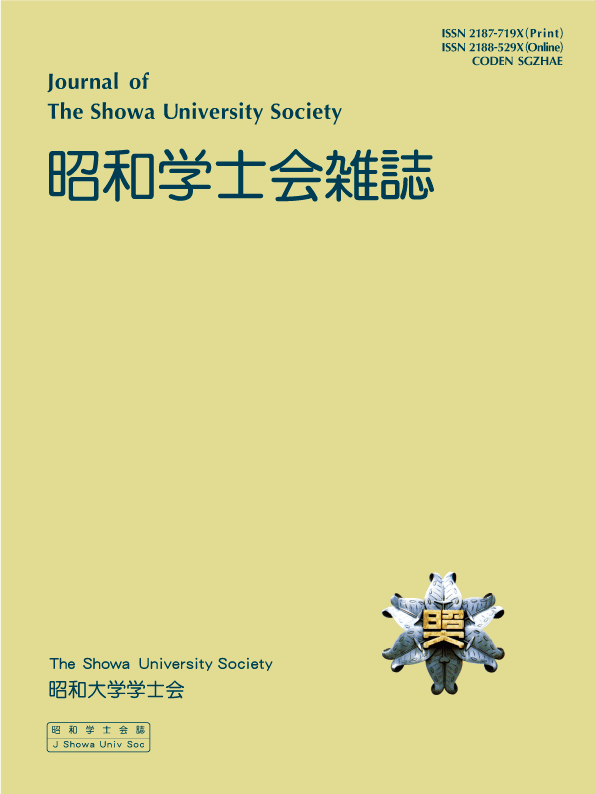Volume 82, Issue 3
Displaying 1-13 of 13 articles from this issue
- |<
- <
- 1
- >
- >|
Feature Articles: Recent advance in clinical hematology: from disease pathology to clinical practice
-
2022 Volume 82 Issue 3 Pages 139
Published: 2022
Released on J-STAGE: July 29, 2022
Download PDF (91K) -
2022 Volume 82 Issue 3 Pages 140-147
Published: 2022
Released on J-STAGE: July 29, 2022
Download PDF (9501K) -
2022 Volume 82 Issue 3 Pages 148-165
Published: 2022
Released on J-STAGE: July 29, 2022
Download PDF (1140K) -
2022 Volume 82 Issue 3 Pages 166-171
Published: 2022
Released on J-STAGE: July 29, 2022
Download PDF (550K) -
2022 Volume 82 Issue 3 Pages 172-181
Published: 2022
Released on J-STAGE: July 29, 2022
Download PDF (348K) -
2022 Volume 82 Issue 3 Pages 182-191
Published: 2022
Released on J-STAGE: July 29, 2022
Download PDF (2124K)
Original
-
2022 Volume 82 Issue 3 Pages 192-204
Published: 2022
Released on J-STAGE: July 29, 2022
Download PDF (962K) -
2022 Volume 82 Issue 3 Pages 205-224
Published: 2022
Released on J-STAGE: July 29, 2022
Download PDF (667K)
Case Report
-
2022 Volume 82 Issue 3 Pages 225-231
Published: 2022
Released on J-STAGE: July 29, 2022
Download PDF (757K)
Short Communication
-
2022 Volume 82 Issue 3 Pages 232-238
Published: 2022
Released on J-STAGE: July 29, 2022
Download PDF (409K)
Clinical Report
-
2022 Volume 82 Issue 3 Pages 239-247
Published: 2022
Released on J-STAGE: July 29, 2022
Download PDF (2003K)
Transaction of The Showa University Society : The 379th Meeting
-
2022 Volume 82 Issue 3 Pages 248-252
Published: 2022
Released on J-STAGE: July 29, 2022
Download PDF (270K)
Transaction of The Showa University Society : The 380th Meeting
-
2022 Volume 82 Issue 3 Pages 253
Published: 2022
Released on J-STAGE: July 29, 2022
Download PDF (86K)
- |<
- <
- 1
- >
- >|
